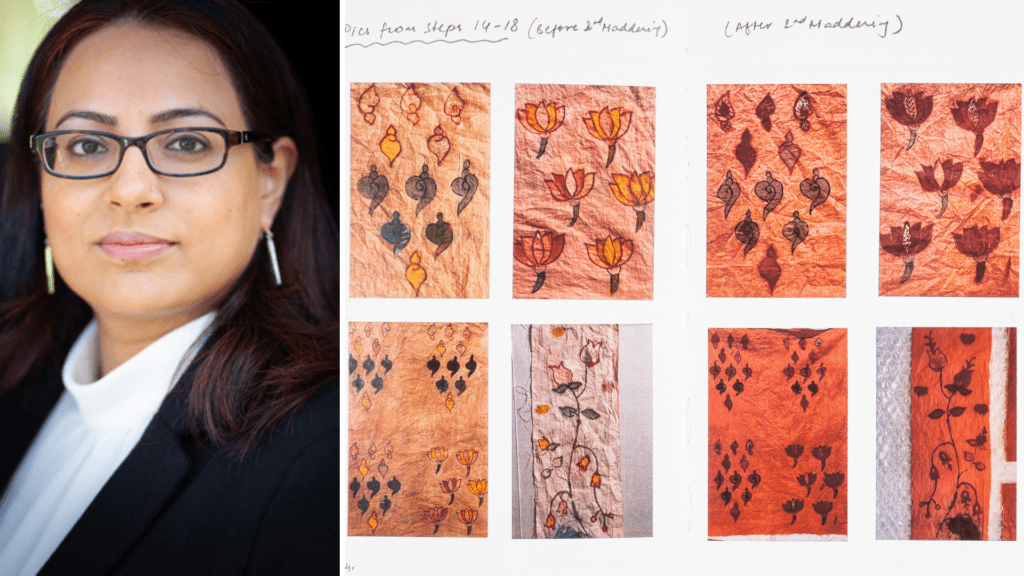
About the Artist
London, England
Alka Raman is a historian with a Ph.D. from the Department of Economic History at the London School of Economics and Political Science. She studies technological change in global economic history. Her research has assessed the impact of Indian cotton textiles on industrialization in the British cotton industry between 1700 and 1860. She uses historic textiles and a scientific experiments-based methodology to source quantitative evidence from textile objects. She applies this approach of scientific and empirical product analysis to understand the materiality of technological change with a view to expanding our knowledge of how technologies alter, persist or become obsolete, and why.
Website: AlkaRaman.com
Social Media: @Scribbles_To_Self
Artist Statement
What did the transfer of written knowledge about chintz-making in India look like in Europe in the seventeenth century? How much knowledge did this written word contain? What would a replication of the process set out on paper look like on the cotton cloth? What would the insights of such a historical reconstruction tell us about the ways in which knowledge transferred from one region to another in the pre-modern world?
Between 1726 and 1729, an individual named Beaulieu traveled around the Coromandel Coast of South India to gain access to local techniques of chintz-making. With the help of a local artisan, he noted these techniques and obtained textile samples materially illustrating the crucial steps of the process. Beaulieu’s work is one of the most detailed accounts of pre-modern Indian techniques of painting on cloth with natural materials. It was also one of the most widely circulated accounts of Indian techniques, used liberally by European printers and dyers to inform their methods.
Charting Chintz attempts to extract the replicability of the knowledge contained within the Beaulieu manuscript. This project aimed not to make a beautiful chintz like Indian artisans, but to replicate as closely as possible the process as described in the manuscript to identify knowledge gaps that would have required bridging by European artisans in their quest to match the print quality of Indian chintzes.
This is a historical reconstruction of the chintz making process as set out in the Beaulieu manuscript, with a view to determining whether adequate technical knowledge was transferred via the written medium to make a whole chintz. In the process, it identifies fixed and variable elements that acted as obstacles to the making of a whole chintz, necessitating further empirical investigations and experiments, leading to the emergence of modern scientific techniques of textile dyeing.
Charting Chintz: Making the Fabric
Making a chintz fabric was an intensive, multistep process. Read more about the materials and processes involved in Dr. Raman’s experiments.